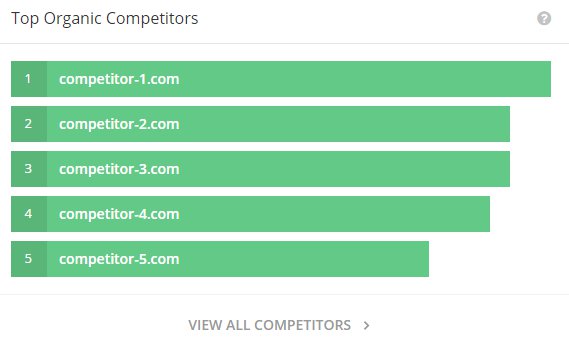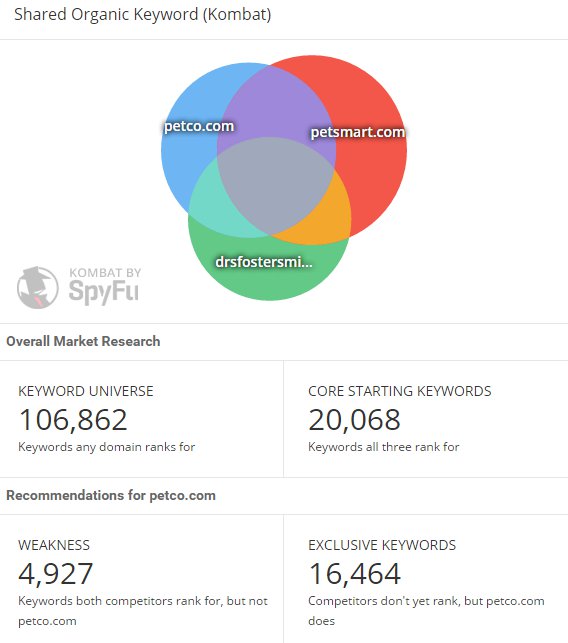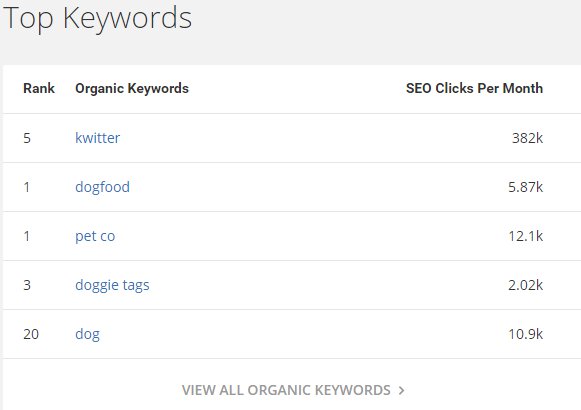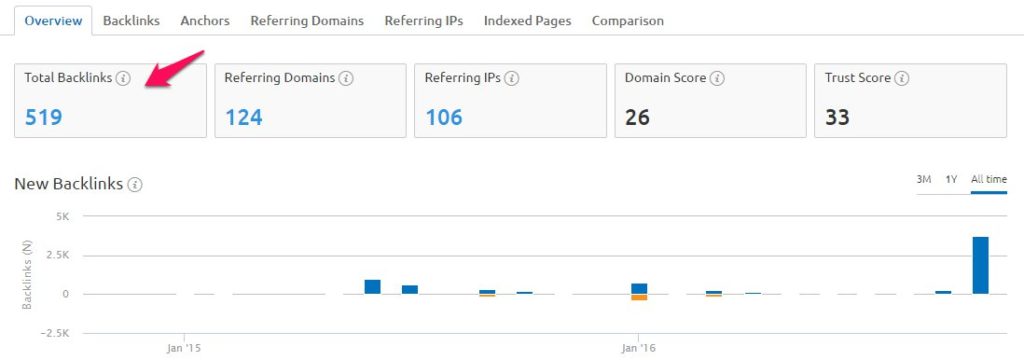
Successful SEO strategies start with competitive analysis — it’s that important.
Putting your direct competitors under the microscope provides rare insight to many of the important questions impacting your organic performance, including …
- Where are you underperforming?
- Where do you maintain an advantage?
- What should you focus on next?
You’re bound to find some golden opportunities that help close the competitive gap.
This guide will show you how to take a quick read on your competitor in 30 minutes or less.
No frills, just the important stuff — let’s get started.
Part 1: Identify Your Direct Competitors
Estimated Time: 5 minutes
Recommended Tool: Spyfu
Weeding out your competition isn’t always so cut-and-dry.
Complications arise when you set your sights on competitors out of your league, whether too big or small — so where’s the sweet spot?
Just remember one thing: It’s best to aim high.
You’re looking for the secret sauce — the competitors performing above you.
Here’s how to find them.
Your competitor shares at least one thing in common with you: They want to rank for the same keywords.
The best way to isolate your competition is to see who ranks for your priority terms.
For my money, the best way to do that is using Spyfu — they offer a free version you can try.
A word of caution: this strategy won’t work if you have no organic keyword rankings, i.e. a brand new site.
Using Spyfu
Start by plugging in your own URL.

*Ignore the ‘competitor’s website’ bit, we’re going to bend the rules a bit.
Click Competition from the side navigation or scroll down and find the Top Organic Competitors chart.

The competitors you see listed here are determined by keyword overlap — domains competing for the same organic clicks across the same terms as your website.
Scroll down a little further and you’ll find Shared Organic Keywords (Kombat).

*This diagram may not be available if there are few shared keywords.
The diagram above illustrates the total volume of ranked keywords; the bigger the sphere, the bigger the volume.
The sections that overlap illustrate keywords where multiple domains share rank.
Just below this diagram you’ll also find a list of Top Keywords.

*The free version of Spyfu will only provide the top 5.
This is super useful information. It provides just about everything you need to pin down your direct competitors, in most cases.
One alternate approach worth mentioning: Search for keywords you have a legitimate chance to rank for — typically long-tail varieties — and see who shows up among organic results.

These are often domains worth considering in your analysis.
Part 2: Analyze Your Competitor’s Links
Estimated Time: 10 minutes
Recommended Tool: SEMRush, Ahrefs & Majestic (this guide uses SEMRush)
Building links is hard work.
Fortunately, now that you’ve identified some competitors, you have a bit of a cheat sheet to potentially find some easy opportunities.
You’ll certainly want to spend more time in this area than what I’ve suggested above, but the point is that it doesn’t take long to pull the data and find serious value.
Using SEMRush
SEMRush is an excellent paid tool — I specifically use it when putting together a competitive analysis.
Begin by plugging in the competitor’s URL into the search field.

Click Backlinks from the left panel navigation.

There’s some useful data within this dashboard you may want to come back to, but we want to drill down a bit; click on Total Backlinks.

Here, just above the fold, you’ll find an overview of your competitor’s backlinks; I recommend you export this data (top right button) for easy sorting and pool multiple competitors.

Pay particularly close attention to the Anchor Text section — This is a quick way to weed out the spam.
In general, you’ll often find links like …
- Directories
- Press releases
- Sponsorships
A few of these will make for worthwhile linking opportunities, but you should be highly selective.
Personally, I consider links more valuable when they require more effort to build.
Did your competitor write a guest post for a major industry site?
Put your best writer on the job and get that link.
Did your competitor create a resource that receives regular links from bloggers in your niche?
Build something bigger and better and reach out to those sites — you already know they’re interested!
The bottom line: Analyzing competitor links works best when you think creatively and swing for the fences.
Part 3: Analyze Your Competitor’s Keywords
Estimated Time: 10 minutes
Recommended Tool: Ahrefs
Keywords are kind of like properties in Monopoly — the more you possess, the more likely you’re going to win out … and draw the ire of your competitors.
Analyzing keyword rankings allows you to get a better sense of your competition, highlighting valuable terms you may have overlooked throughout your own research.
All the tools listed in Part 2 will work great for this — this last portion will use Ahrefs.
Using Ahrefs
Begin by entering your competitor’s URL in the field.

Click Organic keywords from the dashboard or left panel navigation.

You’ll get a full list of their organic ranking keywords …

*Don’t forget you can export this data into a separate file to make your own edits.
This keyword index includes and can be sorted by,
- Position — overall ranking position
- Volume — estimated monthly volume
- KD — estimated difficulty
- CPC — cost-per-click
- Traffic — estimated organic traffic
- URL — ranking webpage
Filter your competitor’s top terms, positions 1 through 10; these are terms they rank for on the first page of results, where virtually all organic traffic occurs.
Time to measure up — how are they performing compared to your site?
Consider these metrics …
- 1st overall ranked terms
- Terms ranked 1-5
- Terms ranked 1-10
Remember: Ranking for more keywords doesn’t always mean you’re receiving more organic traffic. Some keywords are a dime a dozen while others might be worth significantly more.
Finding Valuable Keywords
Looking for good keyword opportunities?
There may be hundreds — even thousands — of keywords to work through, assuming you’re limited on time to find valuable terms, I have a few suggestions …
- Filter out branded terms, i.e. terms that include the company’s name
- Sort terms by their estimated difficulty
- Look for longer-tail keywords; these are typically easier to rank
- Strike the right balance between competition and average monthly traffic
Conclusion
I can’t even tell you how many last minute new business pitches make it to my desk — a potential client is interested in SEO, what can we do for them?
These situations, where your time is very limited but you still need valuable insight, is where this 30-minute competitive analysis truly shines.
This ‘light’ approach still provides plenty of value and helps my team refine the overall strategy.
As a former freelancer, I’ve even used this analysis to bait potential clients — you have a much better chance of catching someone’s attention using tailored data as opposed to boring static emails pitching your service.
Be more efficient with your limited time — this guide will help.
